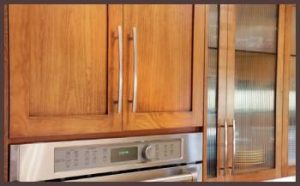As technology advances, the realm of custom lightsabers has grown in both popularity and sophistication. Two frontrunners in the world of saber technology are Xenopixel and Proffie.
In this article, we’ll dive deep into the pros and cons of each system, explore their differences, and provide answers to frequently asked questions about these two powerhouse technologies.
A Brief Comparison Table
| Feature | Xenopixel | Proffie |
| LED Technology | Proprietary addressable LED technology | Supports Neopixel and in-hilt LEDs |
| Brightness | High brightness and vibrant colors | Dependent on the blade technology used |
| Customization | High level of blade effect customization | Extensive feature and effect customization |
| Soundboard | Compatible with various soundboards | Built-in open-source soundboard |
| Open-Source | No | Yes |
| Learning Curve | Moderate to high | Moderate to high |
| Compatibility | Designed for use with Xenopixel blades | Supports multiple blade types |
| Cost | Generally higher than traditional RGB systems | Varies, dependent on components and availability |
| Availability | Limited, proprietary technology | Can be limited due to high demand |
| Community Support | Smaller, specialized community | Large, active community |
This table provides a comparison between Xenopixel and Proffie, highlighting their differences in terms of LED technology, brightness, customization, soundboard integration, and other factors. By reviewing this table, you can get a clearer understanding of the key features and considerations when deciding between Xenopixel and Proffie for your lightsaber build.
The Xenopixel Phenomenon
Pros

- Innovative Technology
Xenopixel has made a splash in the lightsaber community with its innovative approach to LED technology. Utilizing addressable LED strips, Xenopixel has created a lightsaber experience that is brighter, more colorful, and with greater variety than traditional RGB systems. The cutting-edge design allows for smoother scrolling effects, brighter blade colors, and more realistic clashes.
- Customizability
Xenopixel sabers are highly customizable, allowing users to program and adjust various blade effects to suit their preferences. From scrolling ignition and retraction to power-on sequences and animations, Xenopixel gives users the ability to create a truly unique lightsaber experience.
Read More: About Fenix E35 And PD35
Cons
- Cost
Xenopixel technology comes with a higher price tag than most other lightsaber options. The cost of the LED strips and additional hardware required to support the system can be a barrier to entry for some enthusiasts.
- Complexity
While customization is a major selling point for Xenopixel, it can also be a double-edged sword. The complexity of the system requires a higher level of technical knowledge to fully take advantage of its capabilities. This can be daunting for beginners or those who are less tech-savvy.
The Proffie Revolution

Pros
- Open-Source Platform
Proffie is an open-source lightsaber soundboard that has taken the community by storm. Its open-source nature allows for constant updates, improvements, and the addition of new features by the global community. This collaborative approach has led to an incredibly feature-rich soundboard that rivals any on the market.
- Wide Range of Features
The Proffie soundboard boasts an impressive array of features, including smooth swing, customizable blade effects, and the ability to support multiple sound fonts. Additionally, Proffie can support a variety of blade types, including Neopixel and in-hilt LED setups.
Cons
- Learning Curve
Proffie’s extensive feature set comes with a learning curve. While the open-source nature of the platform allows for constant innovation and improvement, it can also lead to a steeper learning curve for newcomers who may be unfamiliar with the intricacies of programming and configuring the soundboard.
- Availability
As Proffie is a community-driven project, availability can sometimes be an issue. The demand for Proffie boards often outpaces the supply, leading to wait times and scarcity.
Read More: About Ketra Lighting
Comparing Xenopixel and Proffie
While Xenopixel and Proffie both have their pros and cons, it’s important to understand their differences and how they cater to different needs within the lightsaber community.
Xenopixel is primarily focused on providing cutting-edge LED technology that offers a more immersive and customizable lightsaber experience. On the other hand, Proffie is an open-source soundboard that prioritizes the collaborative development of innovative features and sound effects.
In a head-to-head comparison, Xenopixel excels in terms of blade effects and brightness, while Proffie shines with its extensive feature set and compatibility with various blade types.
Frequently Asked Questions (FAQs)
It depends on what you’re looking for in a lightsaber. If you prioritize blade effects, brightness, and customization, Xenopixel may be the better choice.
However, if you’re looking for a versatile soundboard with a wide range of features and the ability to support multiple blade types, Proffie might be a better fit for you. Ultimately, the choice between Xenopixel and Proffie will come down to personal preference and the specific features you value in a lightsaber.
Proffie and Neopixel are often used together but serve different purposes in a lightsaber build. Proffie is an open-source soundboard that controls the sound effects, blade effects, and various other features of a lightsaber.
Neopixel, on the other hand, is a type of LED technology used for the blade itself, providing bright and customizable lighting effects.
Xenopixel and Neopixel are both types of addressable LED technologies used in lightsaber blades. While they share similarities in terms of providing bright, customizable lighting effects, there are differences in their design and implementation.
Xenopixel is a proprietary technology that focuses on creating a more immersive and customizable lightsaber experience, whereas Neopixel is a more widely-used technology found in various applications beyond lightsabers.
Xenopixel sabers are generally considered to be high-quality and provide a top-tier lightsaber experience. With their cutting-edge LED technology, they offer brighter and more vibrant blade effects compared to traditional RGB systems.
However, their cost and complexity may be a deterrent for some enthusiasts, especially beginners or those on a tight budget.
In many ways, Xenopixel is considered an upgrade from traditional RGB systems. Xenopixel technology allows for smoother scrolling effects, brighter colors, and greater customization options.
However, the cost and complexity associated with Xenopixel may not make it the best choice for everyone. Those on a budget or with limited technical knowledge may find RGB systems to be more accessible and easier to manage.
Yes, Xenopixel is highly customizable. Users can program various blade effects, scrolling ignition and retraction, power-on sequences, and animations to create a truly unique lightsaber experience.
This level of customization is one of the main selling points for Xenopixel technology and sets it apart from many other lightsaber systems.
Conclusion
When it comes to choosing between Xenopixel and Proffie, it ultimately comes down to your personal preferences and priorities. If you’re looking for a lightsaber with cutting-edge LED technology and a high level of customization, Xenopixel may be the right choice for you. Conversely, if you value a versatile soundboard with a wide range of features and compatibility with various blade types, Proffie might be a better fit.
Both Xenopixel and Proffie have their strengths and weaknesses, but they both represent the pinnacle of lightsaber technology in their respective fields. By considering your individual needs and priorities, you can make an informed decision on which system is the best fit for your lightsaber build.



